Fig and Honey Custard Pie is a a seasonal Rosh Hashanah dessert that takes tradition in a new direction.
Why do we always serve cake for dessert on Rosh Hashanah? Apple cake, honey cake. I get it – cake is delicious. But there something so…European about cake. We are Americans! You know what Americans like? Pie. We like pie. That’s why, this year for Rosh Hashanah, I’m serving pie.
Honey is, of course, one of the most traditional foods for Rosh Hashanah; it is used to express our hope that the coming year will be a sweet one. While many Jewish culinary traditions can be clearly labeled as either Ashkenazi or Sephardic, eating honey on a Rosh Hashanah is one of the few traditions that is nearly univeral throughout the Jewish diaspora. For that reason, it is one of my favorite traditions and one I embrace whole-heartedly.
So when I decided to develop a Rosh Hashanah pie recipe, I knew I wanted it to be sweetened with honey. I could have made an apple pie, certainly. Apples are a traditional Rosh Hashanah food as well. But I feel like Thanksgiving has already claimed the apple pie as its own. No, it had to be a honey pie.
Of course, the idea for a pie filled with a honey-sweetened custard is not exactly ground-breaking. Indeed, in paging through pie-baking books I found several recipes for such a pie, which I consulted in developing this recipe. I am particularly indebted to the recipe for Lavender Honey Custard Pie in The Four & Twenty Blackbirds Pie Book. But I don’t know that I have ever seen a honey custard pie billed specifically as a Rosh Hashanah recipe. To me, however, it makes perfect sense.
I garnish this honey custard pie with another traditional Rosh Hashanah food: figs. Native to the Middle East, figs are a common ingredient in Sephardic cooking in both fresh and dried form. As the largest crop of figs ripen in the fall, they are often served at Sephardic Rosh Hashanah celebrations. Jews consider figs to be particularly holy because they were one of the seven staple foods, known as the Seven Species, eaten by Jews in the land of Israel during Biblical times. Because they produce multiple crops every year, fig trees also symbolize fruitfulness.
Any figs will work in this recipe. The Black Mission figs are probably the most common and their purple color is certainly striking. But if you happen upon some green or yellow figs, such as Kadota, those would be lovely as well.
As always when working with pastry, I highly recommend preparing the pie dough the night before you plan to bake the pie. An overnight rest in the chill of the refrigerator relaxes the gluten and helps ensure a flaky crust. This also has the advantage of spreading out the work over two days.
Of course, if you don’t celebrate Rosh Hashanah, this Fig and Honey Custard Pie would make a spectacular dessert for any fall celebration and is a perfect way to take advantage of the brief and fleeting season for fresh figs. Some varieties of figs will be available through October, but I still wouldn’t wait too long to make this beautiful pie.
What about you? Do you think you would ever make a pie for Rosh Hashanah?
Ingredients
- 8 ounces cold, unsalted European-style butter, cut into cubes plus 1 TB butter, melted
- 2 1/2 cups all-purpose flour
- 1 tablespoon sugar
- 2 teaspoons salt
- ½ cup ice water
- 1 tablespoon lemon juice or vinegar
- 1/3 cup sugar
- 1 TB flour
- 1 TB cornmeal, preferably fine-ground
- 1 tsp salt
- 3 TB butter, melted
- 2/3 cup honey, preferably a floral or fruity variety
- 3 eggs and 1 egg yolk
- 1 1/2 cups heavy cream
- 2 tsp lemon juice
- 4-5 figs to garnish
Instructions
- To make the crust, combine the flour, sugar and salt in the bowl of a food processor and pulse a few times to mix. Add the chilled butter and process until the mixture resembles coarse meal.
- Combine the lemon juice or vinegar and ice water and add six to eight tablespoons of the mixture to the ingredients in the food processor. Pulse several times until combined. Pinch a bit of the dough and if it holds together, you do not need to add more liquid. If it is still dry, add more of the liquid, one-half tablespoon at a time. Remove the dough to a bowl or a well-floured board.
- Knead the dough until it forms a ball. Divide the dough into two and wrap each half well in plastic wrap. Place the dough in the refrigerator to relax for at least a half-hour but preferably overnight.
- Remove one of the balls of dough from the refrigerator. (Save the other ball of dough for another pie or quiche.) If your dough was chilled for longer than thirty minutes, allow to soften for ten to fifteen minutes before rolling it out.
- Prior to rolling out the dough, strike it with your rolling pin to flatten. This will soften it further. Lightly grease the bottom and sides of a 9-inch pie plate with melted butter.
- Liberally dust a pastry board or mat and your rolling pin with flour. Roll the dough out, rotating it and turning it frequently and adding more flour as necessary to keep it from sticking, until it is the size of your pie plate and between ¼ and ⅛ of an inch thick.
- Carefully center the pie dough in the plate and press it into the bottom and sides. Tuck any excess dough under and make a crimped crust by pinching with your fingers or decorate the crust using the tines of fork.
- Chill the crust for at least thrity minutes. Meanwhile, preheat the oven to 425.
- Once chilled, dock the crust all over with the tines of a fork to prevent shrinking. Freeze it for 10 minutes.
- To blind-bake the crust, cover it with foil and line the pie plate with pie weights or raw rice. Bake the crust for 20 minutes. The remove the weights and foil and bake it for an additional 3-5 minutes. Cool completely prior to filling.
- Turn the oven down to 350.
- Combine the sugar, flour, cornmeal, salt in a large bowl. Whisk in the melted butter followed by the honey.
- Add the eggs one at a time, whisking after each addition, followed by the egg yolk. Pour in the cream and lemon juice and whisk until combined.
- Pour the custard into the cooled, pre-baked pie shell. Place the pie in the oven and bake until the edges are set and puffed and the center is still wobbly but not liquid, about 1 hour. (Do not leave pie in the oven until the center is set or you will overbake it. The center will set as it cools.)
- Allow custard to cool completely before slicing. Just prior to serving, slice the figs thinly and arrange on top of the custard.
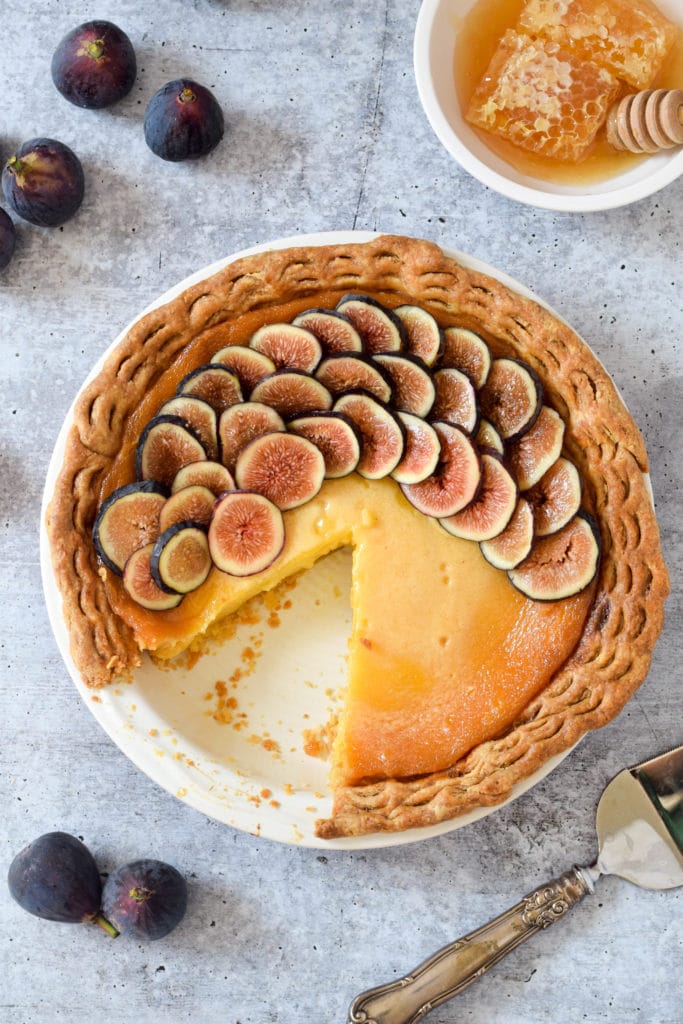
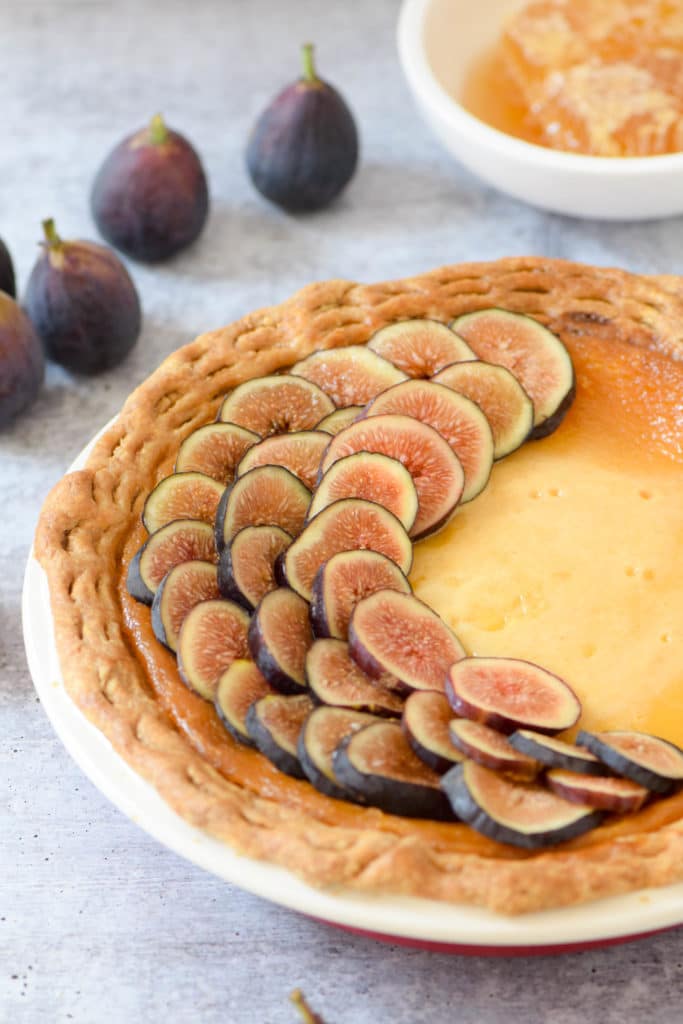
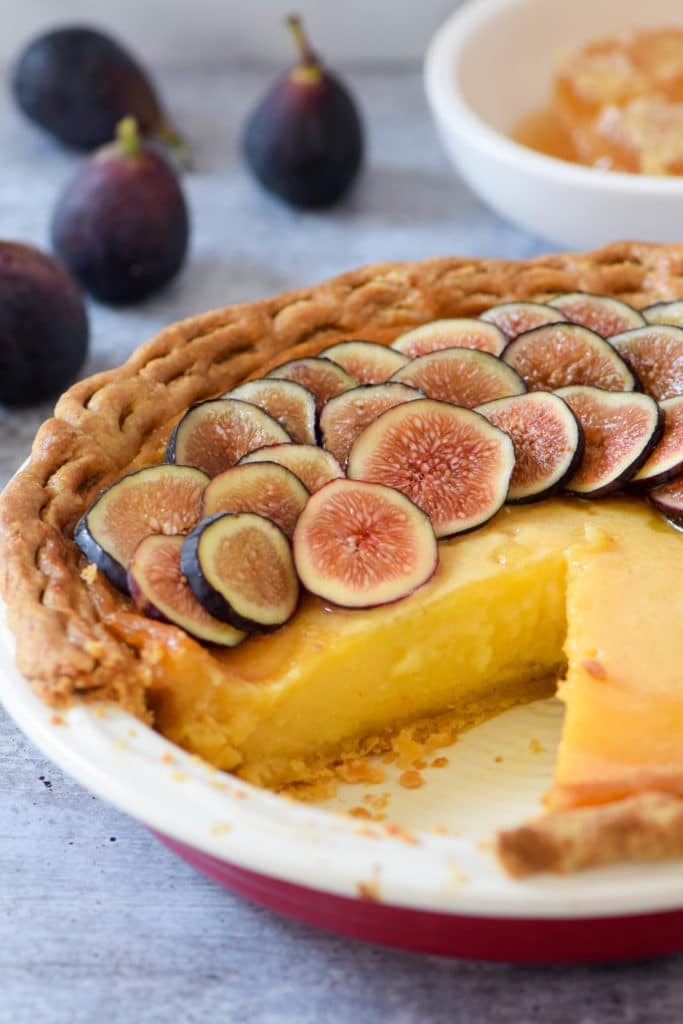
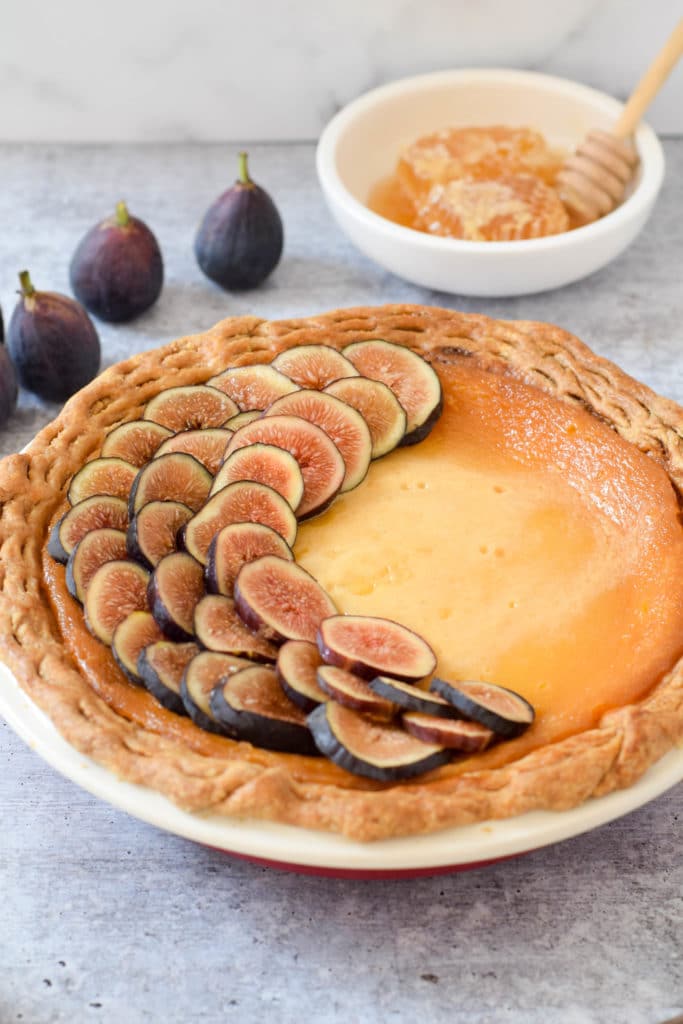
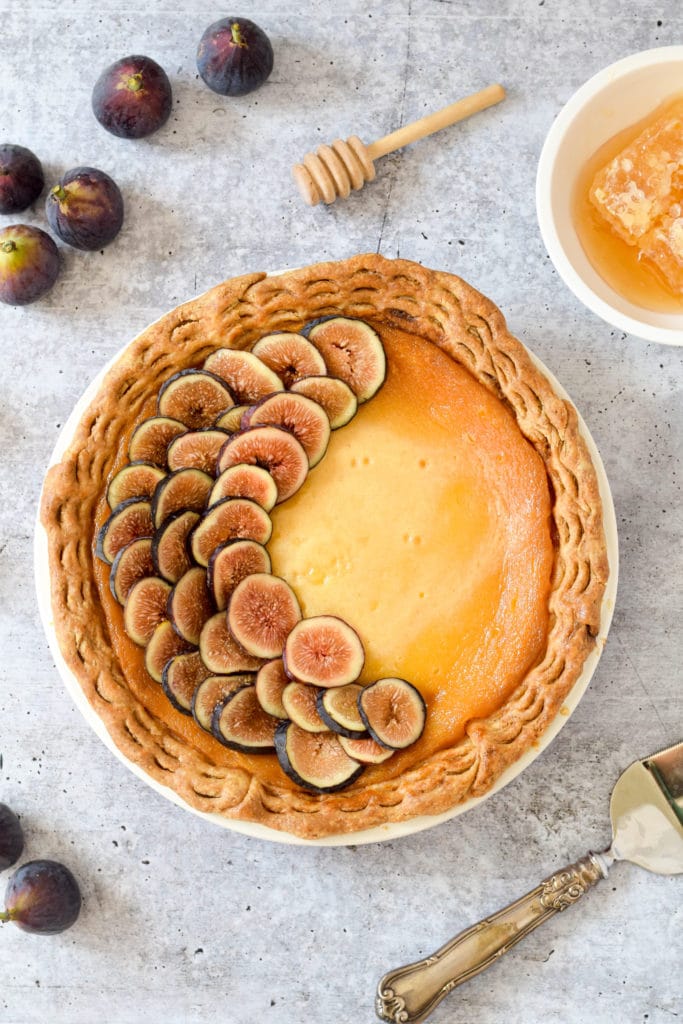
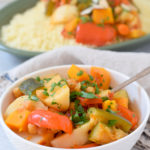
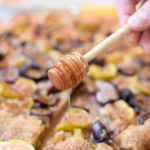

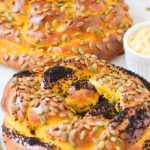

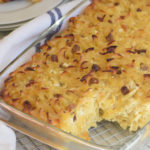
[…] and I was going to make a pie this year? Lies. All lies. As soon as I finished making that amazing Fig and Honey Custard Pie that blew up on Instagram – thanks for the kind words, everyone – I started thinking […]